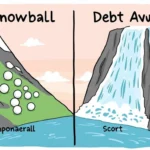Have you ever walked into a store or browsed online and found yourself adding items to your cart that you never planned to buy? Or bought something just because it was on sale, only to realize later that you didn’t really need it? You’re not alone.
The psychology of spending reveals fascinating insights into why people often buy things they don’t need. Understanding these underlying reasons can help you make smarter financial decisions, curb impulse purchases, and build healthier spending habits.
In this article, we’ll explore the psychological triggers that drive unnecessary spending, the emotions behind shopping behavior, and practical strategies to regain control over your financial choices.
Why Do We Buy Things We Don’t Need?
At first glance, spending money on unnecessary items might seem irrational. However, our brains and emotions play significant roles in these decisions. Several psychological factors explain why we buy things we don’t need:
1. Emotional Satisfaction and Instant Gratification
Shopping often triggers feelings of pleasure. When you buy something new, your brain releases dopamine, the “feel-good” neurotransmitter linked to reward and motivation.
- Impulse buying can offer a quick emotional boost, especially when you’re stressed, bored, or unhappy.
- The act of purchasing feels like a short-term solution to negative feelings.
2. Social Influence and Status Symbolism
Humans are social creatures influenced by peers, trends, and societal expectations.
- Buying trendy products or luxury items can be a way to fit in or signal status.
- Advertisements and social media amplify desires by showcasing lifestyles associated with certain products.
3. Cognitive Biases and Heuristics
Our brains often take mental shortcuts when making decisions, which can lead to irrational purchases.
- Anchoring bias: When you see a high original price crossed out, you perceive a “deal,” making you more likely to buy.
- Scarcity effect: Limited-time offers or low stock notifications create urgency to buy.
- Loss aversion: Fear of missing out (FOMO) can push you to purchase to avoid feeling left out.
4. Habit and Routine
Sometimes we buy things out of habit without conscious thought.
- Visiting a favorite store or scrolling through a shopping app can lead to mindless purchases.
- Rewards programs or loyalty points can encourage ongoing spending.
5. Marketing and Retail Strategies
Retailers expertly design environments and online experiences to encourage spending.
- Store layouts, lighting, music, and scent influence mood and purchasing.
- Personalized ads and retargeting online push consumers to revisit products.
The Role of Emotions in Spending Behavior
Spending is rarely just a logical transaction; it’s deeply emotional. Let’s dive deeper into how feelings affect buying decisions:
Emotional Spending: Retail Therapy
Many people use shopping to manage emotions — a concept often called “retail therapy.”
- Buying new clothes, gadgets, or décor can temporarily lift mood or provide distraction.
- However, this can lead to guilt or regret afterward, creating a cycle of emotional spending.
Stress and Boredom
Stress and boredom are two common triggers for unnecessary spending.
- Stress can cause a desire for control or comfort, leading to impulse purchases.
- Boredom prompts the search for stimulation or novelty, often fulfilled through shopping.
Identity and Self-Expression
Purchases can be a way to express identity or values.
- Some buy eco-friendly or artisan products to align with personal beliefs.
- Others purchase luxury items to express success or aspiration.
Common Spending Traps and How to Avoid Them
Understanding common psychological spending traps can help you recognize when you’re being influenced to buy unnecessarily.
Trap 1: Impulse Buying
How to Avoid:
- Implement a “24-hour rule” before making non-essential purchases.
- Create shopping lists and stick to them.
- Remove saved payment info from websites to add friction.
Trap 2: Sales and Discounts
How to Avoid:
- Ask yourself if you would buy the item at full price.
- Avoid buying “just because it’s on sale.”
- Track spending to see if sales lead to extra purchases.
Trap 3: Emotional Shopping
How to Avoid:
- Identify emotional triggers for spending.
- Find alternative coping mechanisms like exercise, journaling, or hobbies.
- Limit access to shopping apps or stores when feeling vulnerable.
Trap 4: Social Pressure
How to Avoid:
- Reflect on whether purchases align with your values and needs.
- Avoid comparing yourself to others on social media.
- Focus on long-term goals rather than short-term validation.
Practical Strategies to Control Unnecessary Spending
Changing spending habits requires awareness, discipline, and actionable plans. Here are some effective strategies:
1. Create and Stick to a Budget
- Track income and expenses using apps like Mint or YNAB.
- Allocate funds for essentials and discretionary spending.
- Review your budget regularly to identify unnecessary expenses.
2. Use Cash or Debit Instead of Credit
- Paying with cash or debit can make spending feel more tangible.
- Credit cards often encourage overspending because the money isn’t immediately deducted.
3. Plan Purchases Mindfully
- Before buying, ask: “Do I need this?” and “Can I afford it?”
- Consider the long-term value or use of the item.
4. Limit Exposure to Marketing
- Unsubscribe from promotional emails.
- Use ad blockers online.
- Reduce time on social media platforms that encourage consumerism.
5. Focus on Financial Goals
- Set clear goals such as saving for a house, emergency fund, or retirement.
- Visualize the benefits of saving instead of spending.
The Benefits of Mindful Spending
Mindful spending is about making conscious financial choices aligned with your values and goals. Benefits include:
- Reduced financial stress and debt
- Increased savings and wealth building
- Greater satisfaction with purchases
- Improved overall financial health
When to Seek Help
If you feel that compulsive spending is out of control or causing serious financial harm, consider professional support.
- Financial counselors can help create plans and budgets.
- Therapists or support groups can address emotional or compulsive spending habits.
Useful Tools and Resources
- Mint Personal Finance App — Budgeting and expense tracking
- You Need A Budget (YNAB) — Popular budgeting software
- Consumer Financial Protection Bureau — Financial education resources
- NerdWallet on Emotional Spending
- Psychology Today – Compulsive Spending
Conclusion: Taking Control of Your Spending Habits
Buying things we don’t need is often less about the items themselves and more about the psychological triggers behind our spending behavior. Recognizing these factors empowers you to make intentional choices, resist impulse buying, and build a healthier relationship with money.
By understanding your emotions, creating a budget, and practicing mindful spending, you can stop unnecessary purchases and focus your resources on what truly matters to you.
Remember, financial freedom starts with awareness — and every small step toward mindful spending can lead to lasting positive change.
🎁 Want a Surprise?
Click here to get redirected to a random post


